

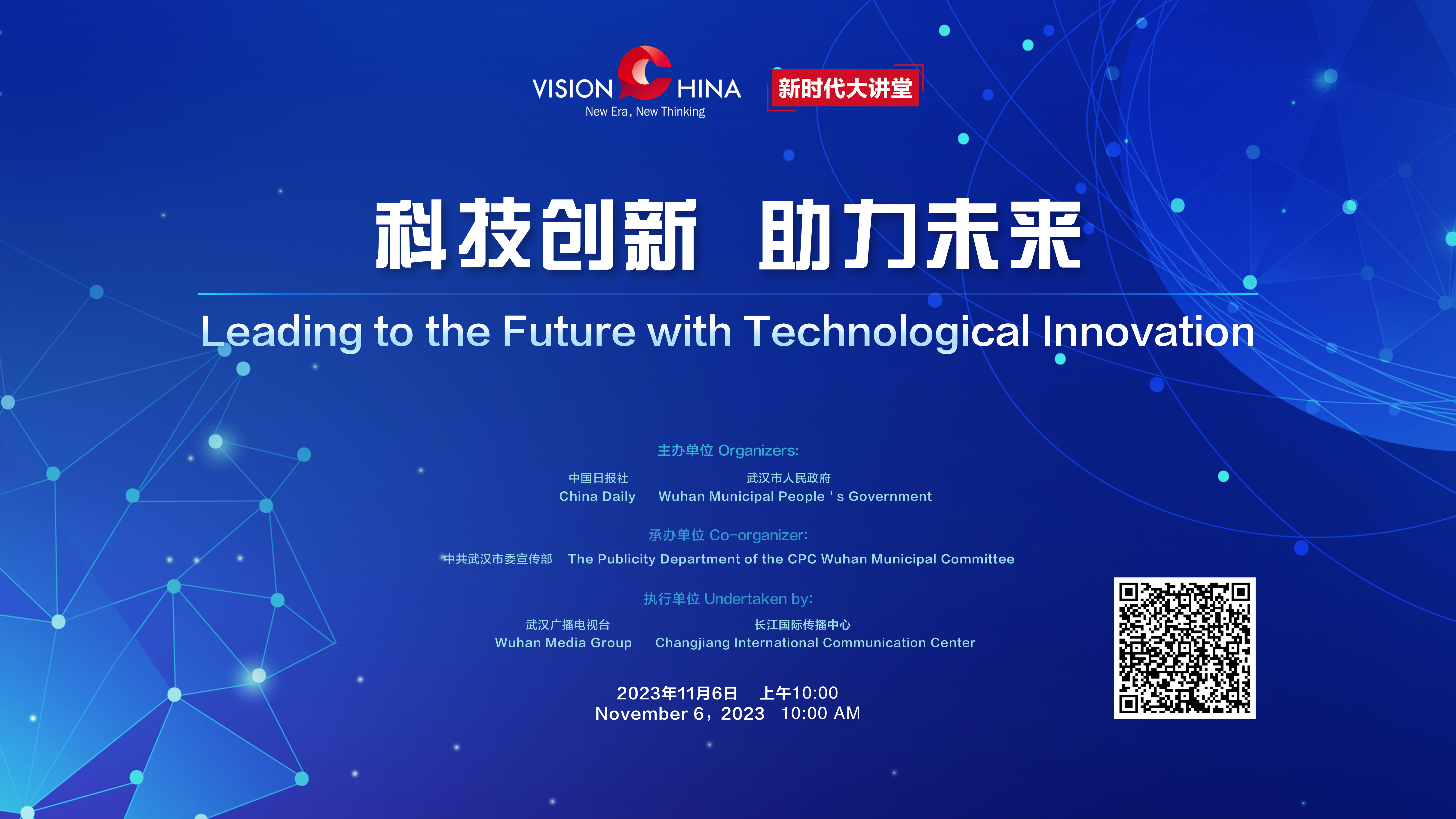
China Daily launched Vision China in 2018 to play its role as a bridge for communication between China and the rest of the world. Focusing on developments in both China and abroad, Vision China invites well-known Chinese and overseas opinion leaders to give talks and share their ideas on forums focusing on a wide range of topics.
Nov 6, 2023 – "Leading to the Future with Technological Innovation", Wuhan, Hubei province
Oct 13, 2023 – "Youth Generation: Powering the future of the Belt and Road", Taicang, Jiangsu province
July 13, 2023 – "Tracing the origins of Chinese civilization and passing it on to future generations", Chaoyang, Liaoning province
May 18, 2023 – "Intelligence: Extensive development space, sustainable growth driver", Tianjin
Alan Macfarlane, professor of Social Anthropology at the University of Cambridge and fellow of the British Academy, said at Vision China that?China has preserved better than almost anywhere else in the world the cultural heritage of minority ethnic groups.
He noted that what is important to save is their (living people's) whole life, so their songs, their music, their agricultural systems, their dances, their family life, all that, if possible, should be recorded.
In an era of globalization, cultural heritage helps us to remember our cultural diversity, and its understanding develops mutual respect and renewed dialogue among different cultures, a former UN senior economist said at Vision China.
Mehri Madarshahi, also a member of the UNESCO International Center for Creativity and Sustainable Development (ICCSD) Advisory Committee, added that exchanges and mutual learning among civilizations must not be built on the exclusive praise or belittling of one particular civilization.
Lazare Eloundou Assomo, director of UNESCO World Heritage Centre, sent his greetings to the latest Vision China event through a video message, in which he noted that China has long advocated for harmonious coexistence between people and nature.
Since joining the Convention Concerning the Protection of the World Cultural and Natural Heritage in 1985, China has been playing a leading role in the implementation of the convention and actively sharing its rich experience and expertise in the field of heritage conservation, he noted.
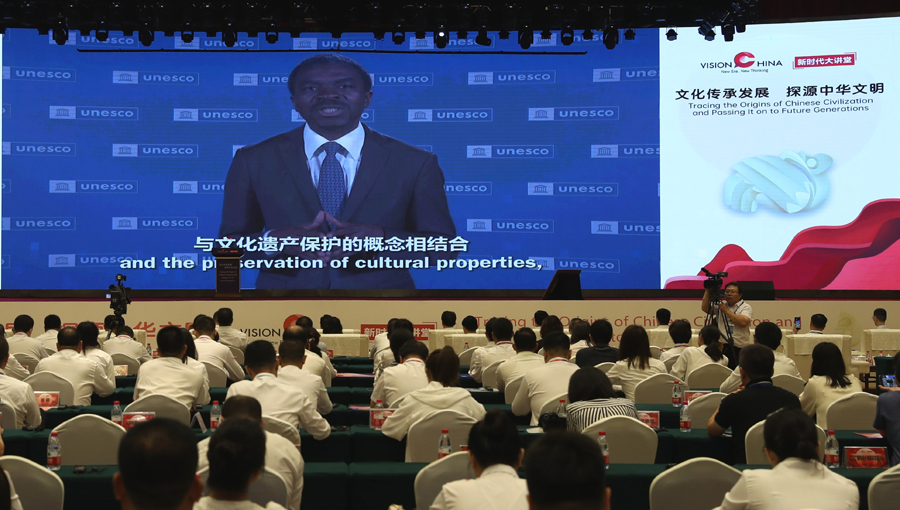
Lazare Eloundou Assomo
Director of UNESCO World Heritage Centre
In 1972, the World Heritage Convention was born in the spirit of international cooperation and solidarity. It is a unique international treaty linking for the first time the concept of nature conservation and the preservation of cultural properties, recognizing the way people interact with nature and the fundamental need to preserve balance between the two.
China has long advocated for the harmonious coexistence of people and nature. Since certifying the World Heritage Convention in 1985, China has been playing a leading role in the implementation of the convention, actively sharing its rich experience and expertise in the field of heritage conservation with other state parties and heritage stakeholders.
Heritage conservation is not only about preserving the past. It is a dynamic process for developing and testing new approaches and ideas to address global challenges and bring people together. As the World Heritage Convention enters its next 50 years, many people are asking if it is still relevant today. My answer is undoubted "yes". By constantly working to save the shared heritage of humanity and recognize the value of its diversity, we are promoting inclusive approaches and making critical contributions to the key mandate of UNESCO. Our journey will continue for years to come.
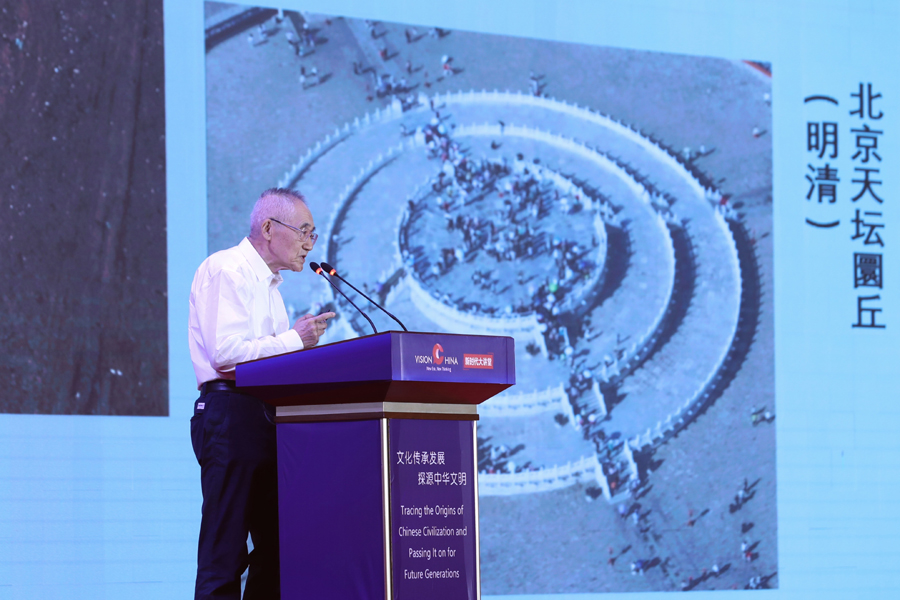
Guo Dashun
Standing director of the Chinese Institute of Archaeology, former deputy director of the Liaoning Provincial Department of Culture
At the site in Niuheliang, the ruins of a goddess temple, altars, and stone mounds from 5,500 years ago suggest a grand hub for sacrificial ceremonies. It is the only prehistoric temple ruin to have been excavated in China to date.
The people of Hongshan Culture particularly favored jade. Sacred animals including dragons, phoenixes, tortoises, and silkworms, are depicted in many jade artifacts, demonstrating their role in communication with the deities. The reverence for jade can also be seen in later Confucianism, which made it a metaphor for many virtues.
Hongshan Culture was deeply rooted in the history and traditions of northeastern China, but it also absorbed cultural elements from elsewhere in a sign of its vitality.
This inclusive attitude toward neighboring cultures may have provided the impetus to form and pass on Chinese civilization from one generation to the next. Hongshan Culture, which is represented by Niuheliang, proves the continuity of Chinese civilization and is the root of ancient Chinese culture.
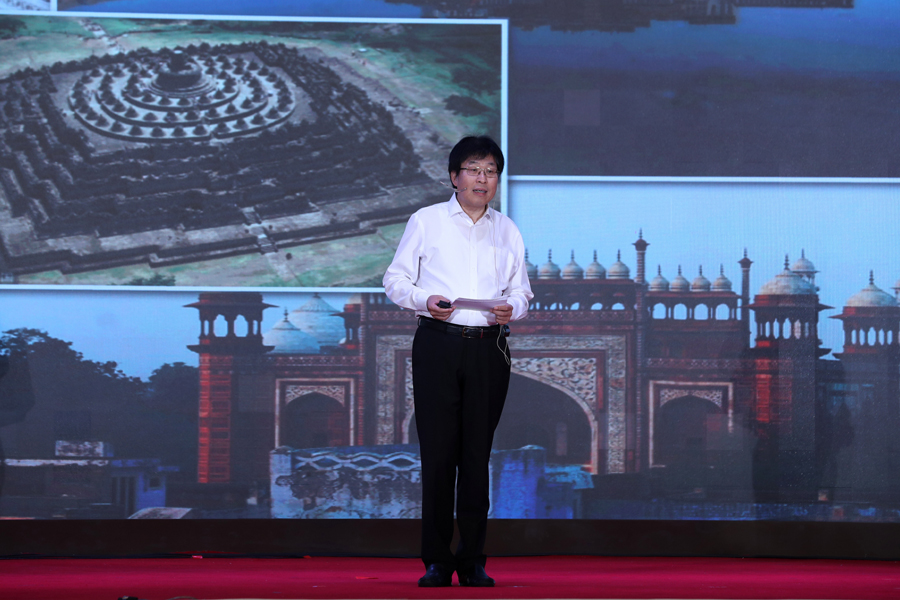
An Laishun
Chairperson, Asia-Pacific Regional Alliance of International Council of Museums, professor of Heritage Management and Museum Studies, Shanghai University
Why do people preserve cultural heritage? Cultural heritage is the creation of our ancestors, the properties we cherish, the environment in which we live, the wealth that we pass on to future generations. It is a cultural treasure left over from history, the stack of time and culture and a source of inspiration for new creativity.
The social value of cultural heritage has broad connotations. During international contact, the promotion of intercultural and interstate dialogue and peace-building through the conservation and use of world heritage is a manifestation of the social value of cultural heritage. At the same time, the contribution to sustainable cultural development is likewise a reflection of the social value of heritage, and at this level, social value is in a certain sense a contemporary, and a realistic value.
As an important part of people-to-people diplomacy, collaboration in the areas of cultural heritage and museums can serve as an efficient method of improving mutual respect and understanding between different countries, nationalities and cultures, and will play an even greater role in the global exchange between cultures.
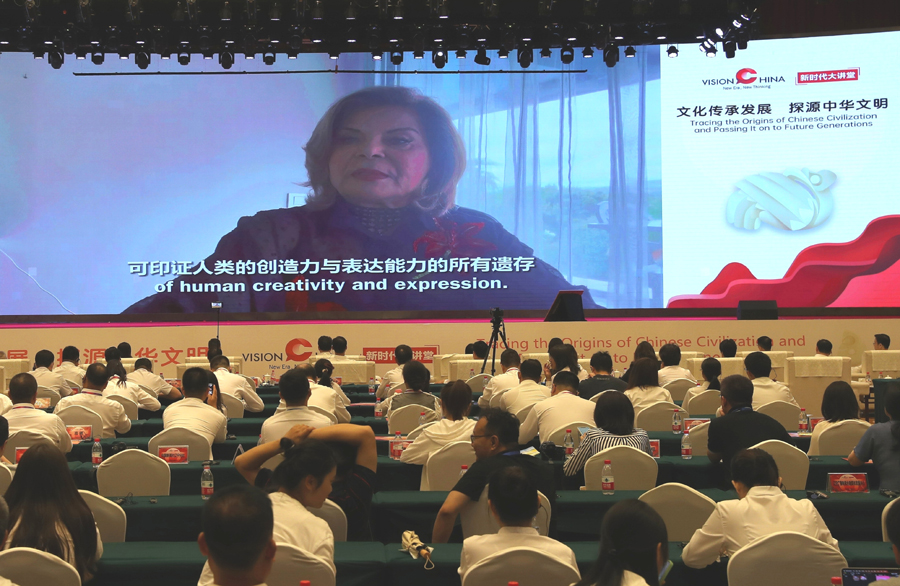
Mehri Madarshahi
Former UN senior economist, member of the UNESCO International Center for Creativity and Sustainable Development (ICCSD) Advisory Committee
Cultural heritage implies a shared bond to the past, to our present, and to the future, representing our history and defining our identity.
The new era of world heritage conservation also involves a focus on sustainable development and community engagement, as well as the integration of modern technology and scientific research into conservation efforts. This approach seeks to balance the preservation of cultural and natural heritage sites with the needs of local communities and the broader goals of sustainable development.
In an era of globalization, cultural heritage helps us to remember our cultural diversity, and its understanding develops mutual respect and renewed dialogue among different cultures.
I have visited many museums in the world... They are attractive because they present the richness of diverse civilizations. Exchanges and mutual learning among civilizations must not be built on the exclusive praise or belittling of one particular civilization.

Jia Xiaobing
Director of World Archaeology Research Office, Institute of Archaeology, Chinese Academy of Social Sciences
Following the excavation of Hongshan Culture sites like Dongshanzui and Niuheliang in Chaoyang, Liaoning province, in the last century, the study of the origins of Chinese civilization has become a popular topic, especially since the project to trace the origins of Chinese civilization has been pursued and has achieved significant results in the 21st century.
The concept of uniting humanity with the universe is important in traditional Chinese philosophy, and refers to the harmonious unity between the universe and humankind. It reflects the ancient Chinese people's understanding of the relationships between humans and nature, humans and society, and humans and their fellow humans.
From the beginning of Chinese civilization, our ancestors recognized the importance of a relationship with the universe and created a system of rituals to make contact with it.
The study of the origins of Chinese civilization has made remarkable strides, and the findings of the origins of Chinese civilization have also contributed to the study of the origins of world civilization, but there are still many unsolved mysteries that remain to be explored.
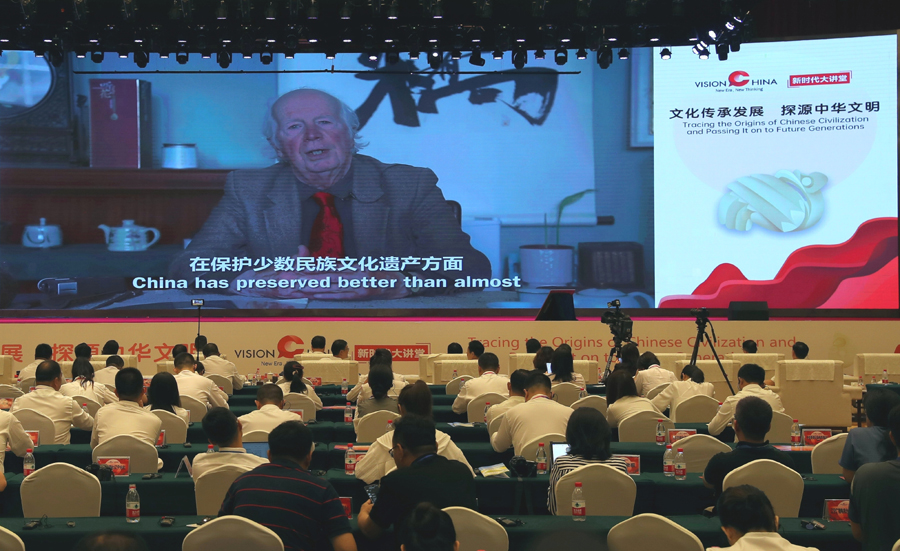
Alan Macfarlane
Professor of Social Anthropology at the University of Cambridge, Fellow of the British Academy
A culture is living people and so the objects are just one thing that has survived from living people. But what is important to save is also their whole life, as much as you can. So their songs, their music, their agricultural systems, their dances, their family life, all that, if possible, should be recorded.
China has preserved better than almost anywhere else in the world the cultural heritage of minority ethnic groups. Wonderful costumes, wonderful folk art, and this is what I think really needs to be preserved in China.
One of the very interesting things we could do is to devote some of that time and imagination and energy to the conservation and dissemination and understanding of our mutual cultures.
Once you make that effort, it encourages mutual understanding and respect for other cultures at a deep level, and hopefully will lead to a world where we will have peace, harmony and order, not endless bullying, misunderstanding, confrontation and competition. So, world culture can unite us all.
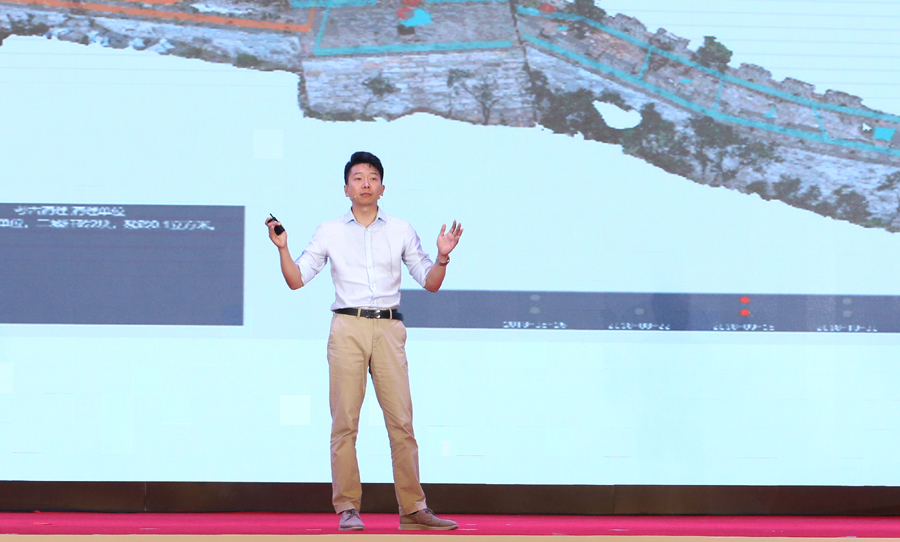
Zhang Jianwei
Deputy dean of the School of Archaeology and Museology, director of Cultural Heritage at Peking University
In light of the flood of recent data caused by the rapid development of 3D modeling and virtual reality technologies, researchers and preservers of cultural heritage sites now face new opportunities and challenges. As with personal computers and smartphones, virtual simulation devices that employ VR (virtual reality) and AR (augmented reality) technologies have great potential to become the next indispensable computation platform. Ever since 2016, "virtual reality's breakthrough year", virtual simulation devices have been used in numerous applications to enhance online tours and public education for cultural heritage sites in China. Today I would like to explore how cultural heritage digitization promotes education and research in the fields of archaeology, museology and tourism.
However, that in-person observations are still indispensable even with the technologies that we have today. The visuality that we acquire through small screens cannot replace the materiality that we experience on site, but they attract us to visit them on-site. I believe this is even more persuasive after the world endured 3 years of the pandemic. For the aim of a community with a shared future for mankind, we will continuously use heritage digitization technology to explore the civilization history of China.

Stephanie Stone
Editor and video producer at China Daily, member of The Edgar Snow Newsroom.
In my research on Hongshan Culture, I came across the concept of plurality and unity as put forth by the Chinese anthropologist and sociologist Fei Xiaotong in 1988. Plurality because each ethnic group in China has its own history and culture; unity because together they make up the Zhonghua Minzu (the Chinese people as a whole), an entity formed by the inseparable internal connections and common interests of all ethnic groups.
The article which referenced Fei's work went on to note that, "what is particularly striking is that the development of various regions was accompanied by increasingly close exchange and communication".
Close exchange and communication. I believe this assessment has global implications. The development of an individual, a country, the global community hinges in large part on close exchange and communication with those from different backgrounds, cultures, worldviews. As a foreign journalist in China, I'm uniquely positioned to be part of the close exchange and communication bridge between China and the West. Let us all continue to do our part for global development by working in tandem to share the stories behind the cultures.
Editor's note:China Daily launched Vision China in 2018 to play its role as a bridge for communication between China and the rest of the world. Focusing on developments in both China and abroad, Vision China invites well-known Chinese and overseas opinion leaders to give talks and share their ideas on forums focusing on a wide range of topics. In this event on Thursday, we gathered in Chaoyang, Liaoning province, a place where Hongshan Culture thrived more than 5,000 years ago. With the theme "Tracing the Origins of Chinese Civilization and Passing it on to Future Generations", experts shared their thoughts on the inspiration provided by ancestors and called for exchanges and mutual learning among various cultures. Let's hear what they said at the forum.
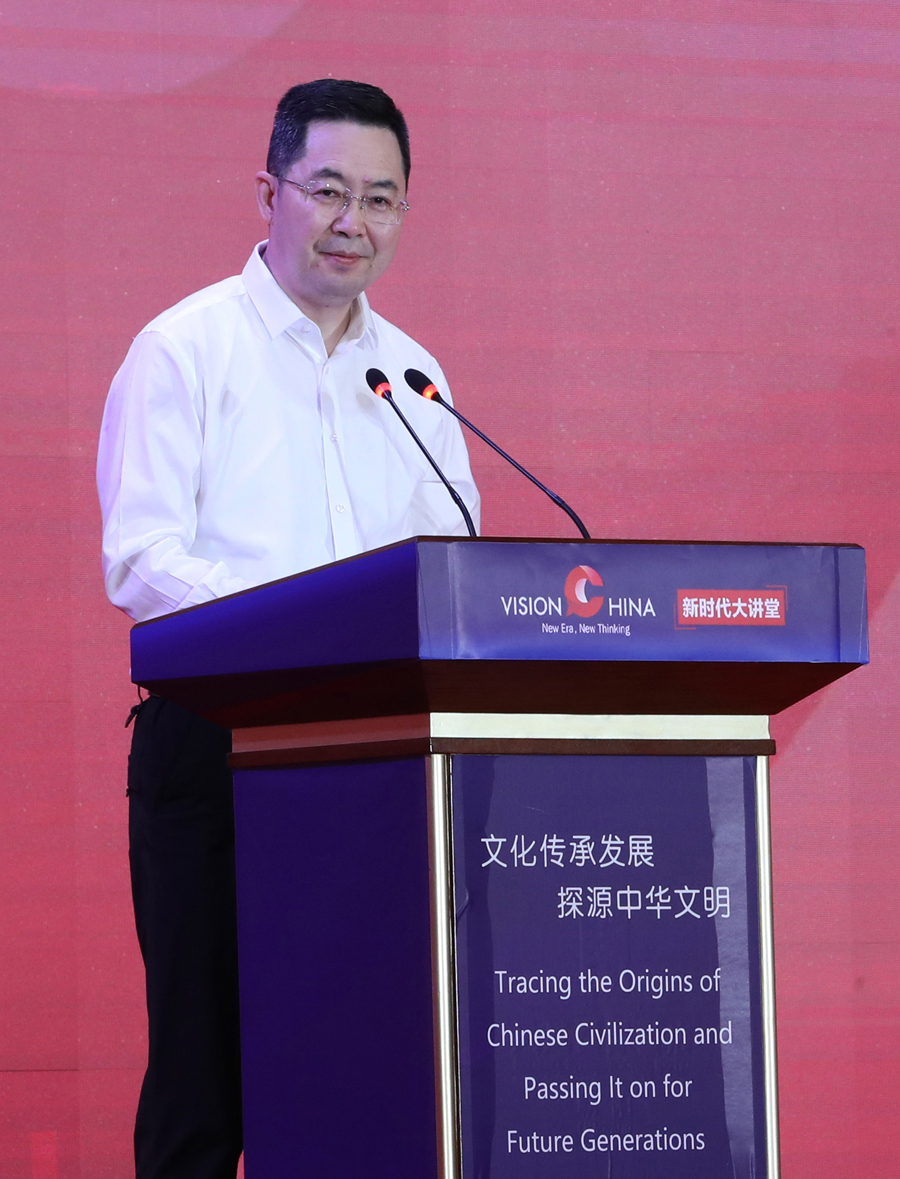
On June 2, President Xi Jinping delivered an important speech at a symposium on cultural inheritance and development, where he gave a comprehensive, systematic, and in-depth explanation of a series of major theoretical and practical issues related to the inheritance and development of Chinese culture, and made strategic deployments for shouldering the new cultural mission and striving to build a modern civilization of the Chinese nation. China Daily has studied the spirit of President Xi's important directives on promoting cultural inheritance and development, and strengthening and improving international communication. We will stay firmly rooted in Chinese culture. We will collect and refine the defining symbols and best elements of Chinese culture and showcase them to the world. We will enhance technological empowerment, expand communication platforms, create high-quality and multimedia products featuring Chinese culture, promote exchanges and mutual learning among world civilizations, and improve the communication strength and influence of Chinese culture.
Today, in conjunction with the National Cultural Heritage Administration and the publicity department of the Liaoning Provincial Committee of the CPC, we have jointly organized Vision China and invited renowned Chinese and foreign experts who are involved in historical research, civilization tracing and cultural heritage protection. They will share their insights on the development of world civilization, cultural inheritance and innovation, as well as their research and thoughts on Hongshan Culture with us. I believe this will be a feast of knowledge.
Liaoning has a long history and rich cultural inheritance. In recent years, it has accelerated its development into a culturally advanced province, especially in strengthening the protection and inheritance of cultural heritage, promoting archaeological excavations and research work focusing on Hongshan Culture, and deepening the study and promotion of Liaoning's regional culture, and has achieved eye-catching results. Yesterday, we visited the Niuheliang site and were moved by the long-standing and profound Chinese culture. This experience has deepened our understanding of President Xi's important speech and further enhanced our sense of responsibility and mission to tell the story of Chinese civilization to the world and promote communication between China and the world. Here, I would like to share three thoughts:
First, we need to systematically introduce the outstanding characteristics of Chinese civilization and present ancient China to the world. China has more than 1 million years of human history, more than 10,000 years of cultural history, and over 5,000 years of civilizational history. From "the sky full of stars" to "the bright moon with sparse stars", China has created numerous dazzling cultural achievements and written a brilliant chapter in the history of human civilization.
As President Xi pointed out, "China's fine traditional culture comprises many important elements which have formed the prominent features of Chinese civilization." The remarkable consistency, originality, uniformity, inclusiveness, and peacefulness "precisely portray" Chinese civilization.
We should strive to explain to the world the social ideals of pursuing common good for all, the governance concept of regarding people as the foundation of the country and governing by virtue, the tradition of unity and diversity, the care for family and country that every person bears responsibility for the rise or fall of their motherland, the spiritual pursuits of embracing the world with virtue and illuminating morality, the economic ethics of enriching people and balancing righteousness and profit, the ecological concept of harmonious coexistence between man and nature, the philosophical thought of seeking truth from facts and combining knowledge with action, the thinking of sticking to the middle way and maintaining harmony, the way of interaction of being trustworthy and kind to neighbors. By doing so, we let the world clearly see where modern China comes from, and recognize and identify a reliable, admirable and respectable China from the continuous Chinese civilization.
Second, vividly demonstrate the modern civilization of the Chinese nation and interpret modern China to the world. President Xi pointed out that it is natural to integrate the basic tenets of Marxism with China's specific realities and fine traditional culture if we are to create and develop socialism with Chinese characteristics on the basis of the profound Chinese civilization of more than 5,000 years. Marxism and China's fine traditional culture are highly compatible. They complement and enrich each other. Their combination makes Marxism bear Chinese characteristics and the fine traditional Chinese culture modern, promoting the creative transformation and innovative development of the latter, that is fine traditional Chinese culture. The "two combinations" have solidified the foundation of the Chinese path, opened up new horizon for innovation, consolidated cultural subjectivity, made the new culture formed through the "two combinations" the cultural form of Chinese modernization, and created modern Chinese civilization and a new form of human civilization.
We need to let the world fully recognize the innovation, inclusiveness and peace that the modern civilization of the Chinese nation inherits and glorifies, as well as the advanced nature that emanates due to the "two combinations". We need to let the world recognize that the historical inevitability, cultural connotation, and unique advantages of the Chinese path are the key to the brilliant achievements of New China since its founding and in the new era. We need to let the world recognize that China has always stood on the right side of history and on the side that represents the progress of human civilization, and let them recognize and identify with a real, three-dimensional and comprehensive image of China that has created "two miracles": rapid economic development and long-term social stability.
Third, expound the Chinese path to modernization and depict the future of China to the world. In the report to the 20th National Congress of the Communist Party of China, General Secretary Xi solemnly declared: From this day forward, the central task of the Communist Party of China will be to lead the Chinese people of all ethnic groups in a concerted effort to realize the Second Centenary Goal of building China into a great modern socialist country in all respects and to advance the rejuvenation of the Chinese nation on all fronts through a Chinese path to modernization.
Ten years ago, President Xi proposed the grand concepts of building a community with a shared future for mankind and the Belt and Road Initiative. Since September 2021, he has successively proposed the Global Development Initiative, the Global Security Initiative, and the Global Civilization Initiative, illustrating how the world should look like in China's view.
We should accurately depict Chinese modernization's significance to the world as a new form of human civilization from the perspective of the development of human civilization, emphasize that China seeks its own development while firmly maintaining world peace and development, and uses its own development to better maintain world peace and development.
Publisher and editor-in-chief of China Daily
Editor's note:China Daily launched Vision China in 2018 to play its role as a bridge for communication between China and the rest of the world. Focusing on developments in both China and abroad, Vision China invites well-known Chinese and overseas opinion leaders to give talks and share their ideas on forums focusing on a wide range of topics. In this event on Thursday, we gathered in Chaoyang, Liaoning province, a place where Hongshan Culture thrived more than 5,000 years ago. With the theme "Tracing the Origins of Chinese Civilization and Passing it on to Future Generations", experts shared their thoughts on the inspiration provided by ancestors and called for exchanges and mutual learning among various cultures. Let's hear what they said at the forum.

Liaoning province in July features a vast sky and stunningly verdant fields and mountains. In this beautiful season, we have gathered in Chaoyang, Liaoning, to hold the Vision China lecture themed "Tracing the Origins of Chinese civilization, Passing it on to Future Generations". We will discuss Chinese civilization with its glorious history of more than 5,000 years, feel the magical meaning of Hongshan Culture, and listen to the sounds of civilization from ancient ancestors.
Here, entrusted by Party Secretary Hao Peng and Governor Li Lecheng, and on behalf of the Liaoning Provincial Committee of the Communist Party of China and the Liaoning provincial government, I would like to extend a warm welcome to all government leaders, guests and media friends; express my admiration to the experts and scholars who have been committed to the exploration, research and promotion of Hongshan Culture for a long time; and express my heartfelt thanks to friends from all walks of life who have always been concerned about Hongshan Culture.
Liaoning has a long history and profound culture. Since ancient times, it has cultivated farming culture, fishing and hunting culture and nomadic culture; witnessed the harmonious co-existence of multiethnic groups; and given birth to the unique Sanyan culture, Liao and Jin culture, and the culture of the early Qing Dynasty (1644-1911).
It is also home of World Cultural Heritage sites including Jiumenkou Great Wall, Wunyu Mountain City, Shenyang Imperial Palace, and Fuling and Yongling Qing royal mausoleums.
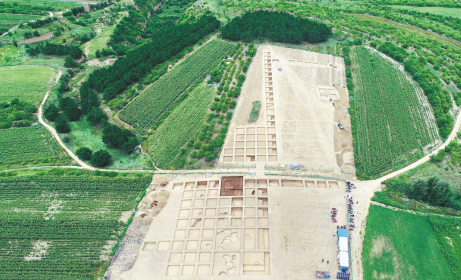
Liaoning has a unique Red culture. It is the origin of the War of Resistance Against Japanese Aggression (1931-45) and saw the turning point of the War of Liberation (1946-49). It is also the source of the national anthem of New China; a departure place of the War to Resist US Aggression and Aid Korea; an important industrial base of China; and the birthplace of Lei Feng's spirit.
Among the rich and diverse cultural heritage of Liaoning, Hongshan Culture stands out with inestimable historical and contemporary value.
In the early 1980s, the Hongshan cultural sites in Niuheliang in western Liaoning amazed the world with their large altars, goddess temples, the stone tombs and large number of precious jade articles.
This great discovery not only expanded the scope of the archaeological study of ancient Chinese history from the Yellow River Basin to the West Liaohe River Basin in the north of the Yanshan Mountain, but also extended the recorded history of Chinese civilization by 1,000 years, providing real archaeological evidence of the over-5,000-year-long Chinese civilization.
The discovery also opened a new chapter in the archaeological investigation of Hongshan Culture and sparked a new surge in interest to study it, which has resulted in new achievements, one after another.
The series of archaeological discoveries including altars, temples, tombs, jade ware, painted pottery and goddess statues have proved that Hongshan Culture had progressed far beyond disparate clans and tribes, and it was the prototype of a country. It shines among the diversified ancient Chinese cultures.
Our Hongshan ancestors worshipped dragons and jade, as well as Heaven and Earth, which had an important influence on the formation of jade culture, dragon worship culture and the etiquette civilization of later generations.
President Xi Jinping has stressed that archaeology is indispensable to understanding the long history of Chinese civilization and the extensive and profound Chinese culture. He has also called for the implementation of major projects such as "comprehensive research on the origins and early development of Chinese civilization" and the establishing of a "modern archaeology in China" with high standards, and stressed a good job should be done in studying and explaining the origin of Chinese civilization.
In recent years, the Liaoning Provincial Committee of the Communist Party of China and the provincial government have attached great importance to the archaeological study, research and publicity of Hongshan Culture.
They have increased investment, improved relevant laws and regulations, held academic activities, strengthened publicity and promotion, and also made great efforts in the application of world heritage sites for Hongshan Culture, together with the Inner Mongolia autonomous region.
Since 2017, generations of archaeologists in Liaoning have been carrying out special archaeological investigations to further unveil the mysteries of Hongshan Culture. By 2022, the number of Hongshan cultural sites in the province had increased from around 90 to more than 500.
Guided by the important speech made by President Xi and his instructions, Liaoning will make scientific planning and concentrate strength and resources to conduct further archaeological investigation, exploration and interpretation of Hongshan Culture and promote the findings.
The province will also proactively participate in Chinese civilization research projects, promote the joint application of World Cultural Heritage sites, and organize multidisciplinary research.
It aims to expand the research direction of Hongshan Culture, continuously explore the culture's rich connotations and deepen understanding of its cultural value, promote the integration of culture and tourism, and push forward the development of Chinese cultural heritage.
I sincerely hope that the National Cultural Heritage Administration and China Daily give greater guidance and support, and that experts and scholars will continue to pay attention to Hongshan Culture, further clarify the origin and formation process of Chinese civilization, show the evolution process of the diversified but integrated Chinese culture, and promote the creative transformation and innovative development of Chinese culture.
Member of the Standing Committee of the CPC Liaoning Provincial Committee, head of the Committee's Publicity Department
Editor's note: China Daily launched Vision China in 2018 to play its role as a bridge for communication between China and the rest of the world. Focusing on developments in both China and abroad, Vision China invites well-known Chinese and overseas opinion leaders to give talks and share their ideas on forums focusing on a wide range of topics. In this event on Thursday, we gathered in Chaoyang, Liaoning province, a place where Hongshan Culture thrived more than 5,000 years ago. With the theme "Tracing the Origins of Chinese Civilization and Passing it on to Future Generations", experts shared their thoughts on the inspiration provided by ancestors and called for exchanges and mutual learning among various cultures. Let's hear what they said at the forum.
Official focuses on studying the past to create the future, and the need to reach out to world, and locate China's contributions to global civilization
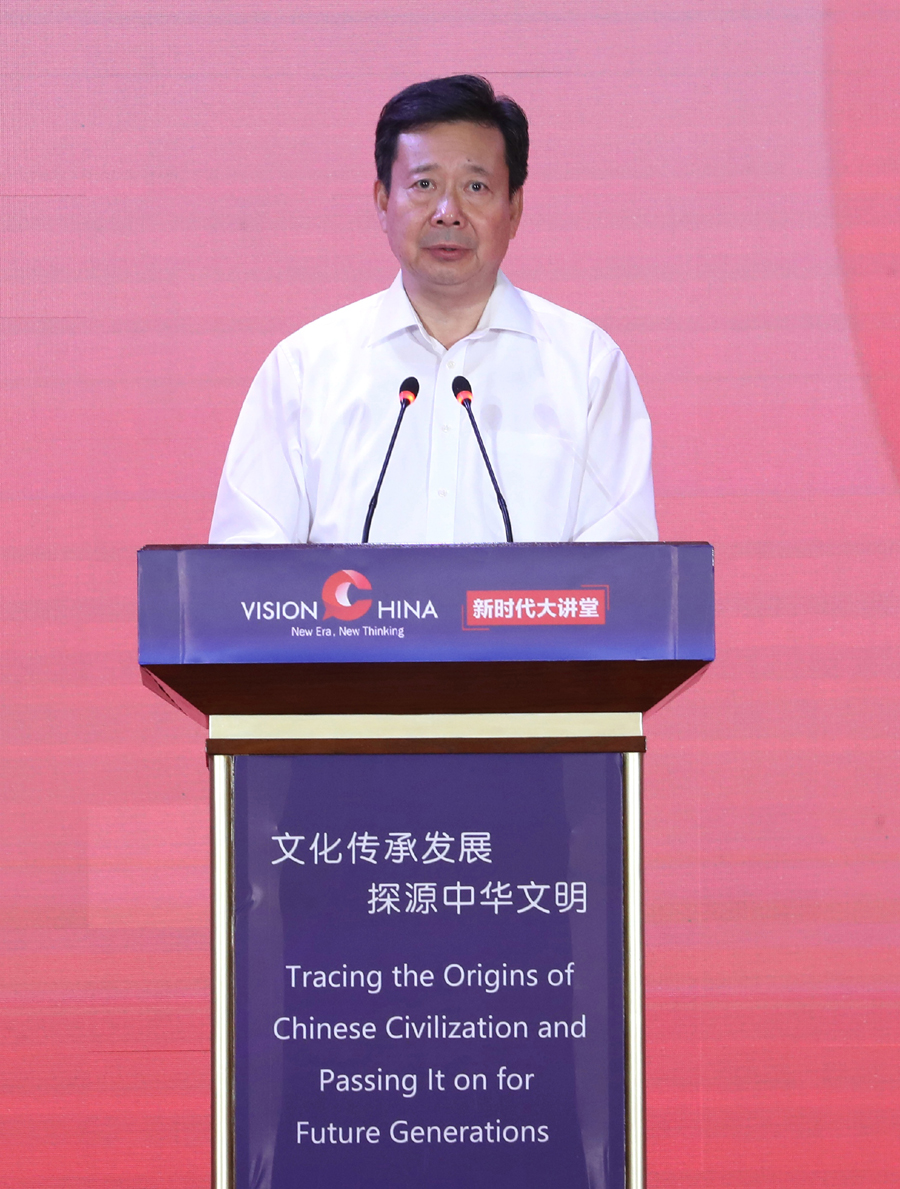
Our majestic China, long may its mountains and rivers run. At this historic moment when the Party and the nation are studying in-depth and implementing the spirit of the 20th National Congress of the Communist Party of China, conscientiously implementing the spirit of General Secretary Xi Jinping's keynote speech at the symposium on cultural inheritance and development on June 2, and embarking on a new journey to build a modern Chinese civilization, we are gathered here in Chaoyang, Liaoning province, one of the important birthplaces of Chinese civilization, and capital of the three Yan regimes during the Sixteen Kingdoms period (304-439), for a Vision China event themed "Tracing the Origins of Chinese Civilization and Passing It on to Future Generations".
Since the 18th CPC National Congress, the CPC Central Committee with Comrade Xi Jinping at its core, has attached importance to cultural heritage work as never before. Focusing on the latest archaeological discoveries and their significance, and deepening the project of tracing the origins of Chinese civilization, General Secretary Xi Jinping has twice presided over group study sessions of the Political Bureau of the CPC Central Committee, pointing out that archaeological discoveries demonstrate the historical lineage of the origins and development of Chinese civilization, its brilliant achievements, and its significant contributions to world civilization; and that the findings of major projects, such as the tracing of the origins of Chinese civilization, have proved the country's million-year human history, ten-thousand-year cultural history, and 5,000-odd-year history of civilization.
He stressed the need to develop archaeology with Chinese features, style and ethos to better understand long-standing and splendid Chinese civilization, and to take the study of the history of the Chinese civilization to a deeper level to enhance our historical awareness and cultural confidence.
On June 2, General Secretary Xi Jinping attended a symposium on cultural inheritance and development and delivered an important speech in which he summed up the five outstanding characteristics of Chinese civilization, namely, consistency, originality, uniformity, inclusiveness, and peacefulness, profoundly elaborated on the inevitable course of "two combinations" (to combine the basic tenets of Marxism with China's specific realities and fine traditional culture), and stressed the necessity of properly carrying out major projects like the comprehensive study on the Origins and Early Development of the Chinese Civilization and Archaeology China, to do a good job of researching and interpreting the origins of Chinese civilization, to take on new cultural missions, to stimulate the vitality of national cultural innovation and creativity, and to work hard to create new cultures that reflect our times.
Hongshan Culture is an important Neolithic culture in the northern part of China. Liaoning, together with the Inner Mongolia autonomous region and Hebei province, is the core area for Hongshan Culture sites, and is also a key area for the comprehensive national research program to trace the origins of Chinese civilization. Its altars, goddess temple, stone barrows and jade ritual artifacts mark profound changes in social structure, perceptions and beliefs in China, and demonstrate that the late period of Hongshan Culture they represent entered a complex social stage. They are an important source of Chinese civilization's tradition of valuing rituals and revering jade. In recent years, archaeological research of Hongshan Culture continues to make new progress. Research of the Civilization Process of Hongshan Society was added to the major Archaeology China project. The Niuheliang site has been turned into a national archaeological park. The dawn of more than 5,000 years of Chinese civilization on this land is gradually becoming clear. The pluralistic and integrated cultural qualities, cultural traditions such as regarding the dragon as a totem and respecting jade, and the concepts of the universe and society, of humans as an integral part of nature, and of the respect for ancestors reflected in Hongshan Culture have been integrated into China's makeup, and have become organic components of Chinese civilization.
It is our new cultural mission in the new era to continue to promote cultural prosperity, build China's cultural strength, and create a modern civilization for the Chinese nation from a new historical starting point. To this end, I advocate deeply understanding the outstanding characteristics of Chinese civilization, profoundly grasping the essence of the "two combinations", deepening research on archaeology, civilization and history, digging deep into the multiple values of cultural heritage, telling the story of China's cultural heritage, giving better play to the role of cultural heritage in uniting hearts and promoting exchange and mutual learning among civilizations, and promoting cultural self-confidence and self-improvement.
First, we shall deepen archaeological studies and prolong the lineage of history and culture. We shall break the bonds created by the present system and its mechanisms, and stimulate the vitality of our field through scientific innovation. We will deepen our research in projects tracing the origins of Chinese civilization and other key programs part of Archaeology China, properly combining archaeological exploration, documentation studies, and the approaches of natural science technology. We can thereby gradually re-tell the process by which trickles of civilization converged into grand rivers, unveiling the pattern of evolution of the global history of civilization and of a "community with a shared future for mankind", and provide inspiration for the development of modern human society. We expect Liaoning to strengthen the excavation, research, and explanation of archaeological sites like those of Hongshan Culture, and make new contributions to prove the more than 5,000 years of history of Chinese civilization.
Second, we shall improve exploration of values and make relics alive. We shall advance the study, explanation and publicity of the historical, cultural, aesthetic, scientific value of heritage, as well as its reference in the modern context. Efforts should be made to sort out traditional cultural resources and bring back to life relics sleeping in closed palaces and records in ancient books, legacies of the vast land of China. The fundamental features of Chinese civilization — consistency, originality, uniformity, inclusiveness, and peacefulness — need to be precisely narrated in their entirety, and the creative evolution and innovative development of fine traditional Chinese culture need promotion.
Third, we shall uphold the idea of openness and inclusiveness and better tell China's story. We shall actively participate in building systems of global governance and academic discourse. We will carry out the practicable steps of the Global Civilization Initiative, and properly construct the Alliance for Cultural Heritage in Asia. We would like to promote collaborative archaeology, as well as communication and cooperation on cultural heritage conservation and museums. We will also strengthen the exchange of experience in protecting cultural heritage and associated theories with other countries, and work with China Daily to create a global communication platform, including the key program Silent Testimony: Artifacts of China's Inclusiveness. Through these efforts, we can contribute Chinese wisdom, solutions, and strength to the global protection of cultural heritage.
Those with deep headwaters have long streams, while those with deep roots have lush leaves. Let us follow the guidance of Xi Jinping Thought on Socialism with Chinese Characteristics for a New Era and stick to the principles of cultural relic-related work, making protection a priority, strengthening management, exploring the values, making effective use, and allowing heritage to come alive. Let us better bear the cultural mission of the New Era with a hardworking attitude to seize the day and strive for success. Let us build the modern civilization of the Chinese nation with righteousness and pioneering spirits to uphold fundamental principles and break new ground and continuously create new glories for Chinese culture, and compose new chapters for the rejuvenation of the nation.
Vice-minister of Culture and Tourism and Director of the National Cultural Heritage Administration
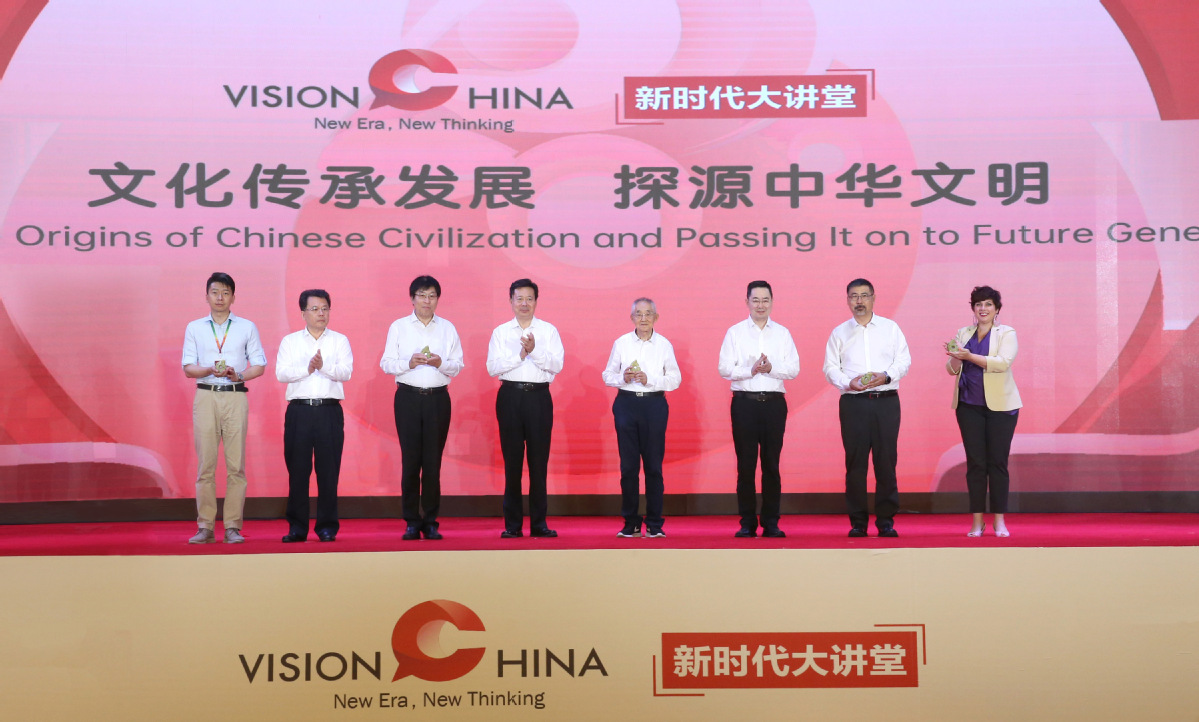
The place that witnessed the dawn of Chinese civilization more than 5,000 years ago, on Thursday hosted experts who gathered to explore the values the modern world could learn from the distant past.
The Vision China event, jointly organized by the National Cultural Heritage Administration, China Daily and the Publicity Department of the Communist Party of China Liaoning Provincial Committee, was held on Thursday in Chaoyang, Liaoning province.

Themed "Tracing the origins of Chinese civilization and passing it on to future generations", the event invited Chinese and foreign experts engaged in archaeological and historical research, civilization studies and cultural heritage protection to share their insights on Hongshan Culture, the development of world civilization, and cultural inheritance and innovation.
At a symposium on cultural inheritance and development on June 2, President Xi Jinping, who is also general secretary of the Communist Party of China Central Committee, summarized five prominent features regarding Chinese civilization — consistency, originality, uniformity, inclusiveness, and peacefulness.

In his keynote speech at the event, Li Qun, director of the National Cultural Heritage Administration, called for in-depth study and implementation of Xi's guidance on cultural heritage work.
"We will deepen our research in key programs, including projects engaged in tracing the origins of Chinese civilization, systematically reveal the discoveries of ancient Chinese society and its historical development patterns," Li said.
Hongshan Culture was a key Neolithic culture renowned for its exquisite jade. It covered parts of today's Inner Mongolia autonomous region, as well as Liaoning and Hebei provinces.
In the early 1980s, a team of archaeologists discovered the Niuheliang site dating back 5,000 to 5,500 years in Chaoyang, marking a milestone in the study of Hongshan Culture.
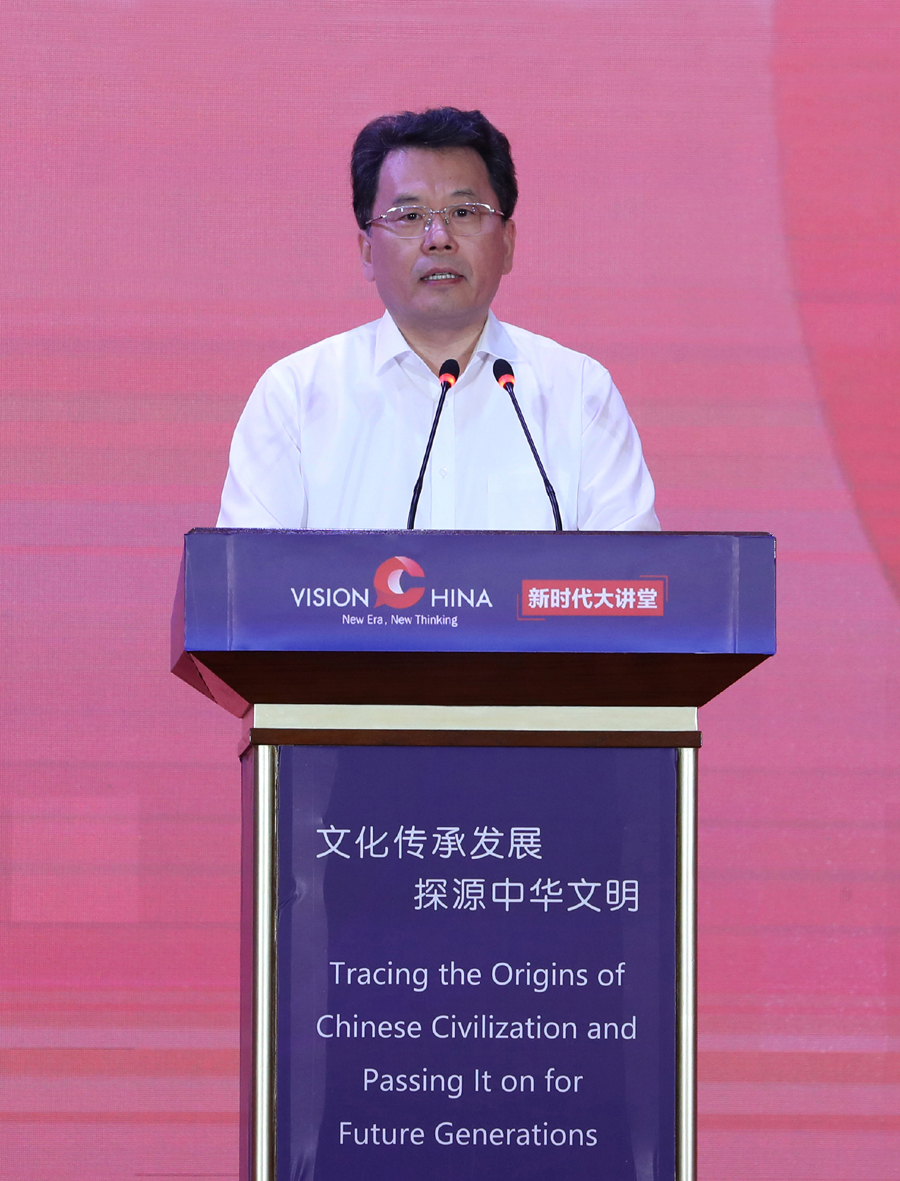
Liu Huiyan, head of the publicity department of the Liaoning Provincial CPC Committee, said the great discovery of Niuheliang not only expanded the scope of archaeological study of ancient Chinese history from the Yellow River Basin to the western region of the Liaohe River Basin, but also extended the recorded history of Chinese civilization by 1,000 years, providing real archaeological evidence about the more than 5,000-year-old Chinese civilization.

Qu Yingpu, publisher and editor-in-chief of China Daily, highlighted the important historical references provided by Hongshan Culture for modern development, and vowed to expand communication platforms, create high-quality and multimedia products featuring Chinese culture, and promote exchanges and mutual learning among world civilizations.
"We visited the Niuheliang site and were strongly moved by the long-standing and profound Chinese culture," he said. "This experience has deepened our understanding of President Xi's important speech and further enhanced our sense of responsibility and mission to tell the story of Chinese civilization to the world and promote communication between China and the world."
"We will stay firmly rooted in Chinese culture. We will collect and refine the defining symbols and best elements of Chinese culture and showcase them to the world," he said.

Guo Dashun, honorary director of Liaoning Provincial Institute of Cultural Relics and Archaeology, led the team that discovered the Niuheliang site in the 1980s. Speaking at the event, he said that the site's altar, temple and tombs, which were used for worship and sacrifice, are scattered over a wide area but are well-structured and form an organic complex with rigorous layouts and a central axis.
The use of jade at funerals in Niuheliang and its layout of a south-north central axis is a major topic of research in the study of the origin of China's traditional rituals.
He noted that scholars from home and abroad have shared the view that as the Hongshan Culture lay at the intersection of the ancient painted potteries cultural belt that spanned the Eurasian continent and the jade cultures that flourished along the Pacific coast, the development of the culture should be studied from a global perspective.

Lazare Eloundou Assomo, director of UNESCO World Heritage Centre, sent his greetings to the event through a video message, in which he noted that China has long advocated harmonious coexistence between people and nature.
Since joining the Convention Concerning the Protection of the World Cultural and Natural Heritage in 1985, China has been playing a leading role in the implementation of the convention and actively sharing its rich experience and expertise in the field of heritage conservation, he noted.
"We will participate in building up global governance and academic discourse systems, carry out practicable steps of the Global Civilization Initiative, promote collaborative archaeology as well as cooperation in cultural relic conservation and museums, and contribute Chinese wisdom, solutions, and strength to the world's protection of cultural heritage," Li Qun added.
"Vision China" is a series event that was launched by China Daily in 2018 to serve as a bridge for communication between China and the world by inviting well-known Chinese and overseas opinion leaders to give talks and share their ideas.
The event has already been held 27 times at home and abroad and through online platforms.
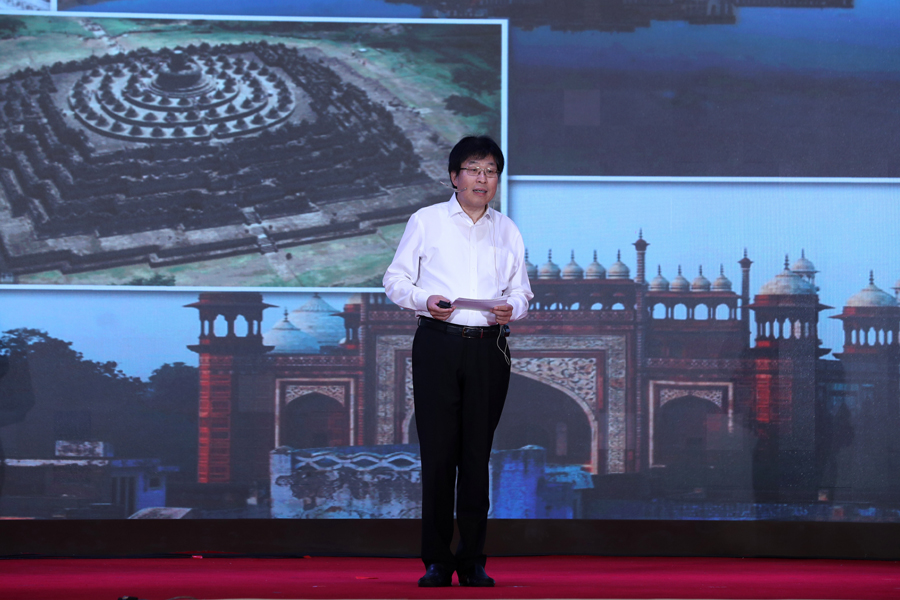
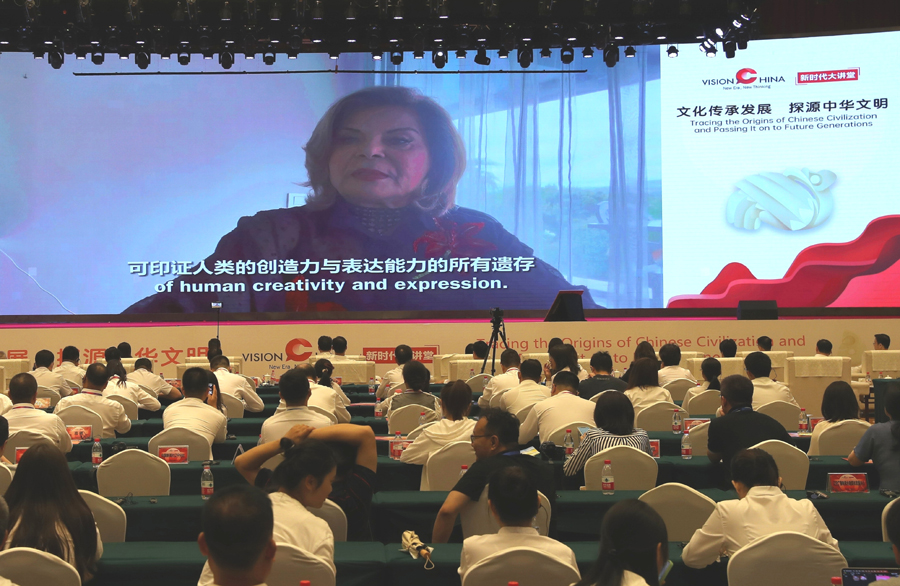
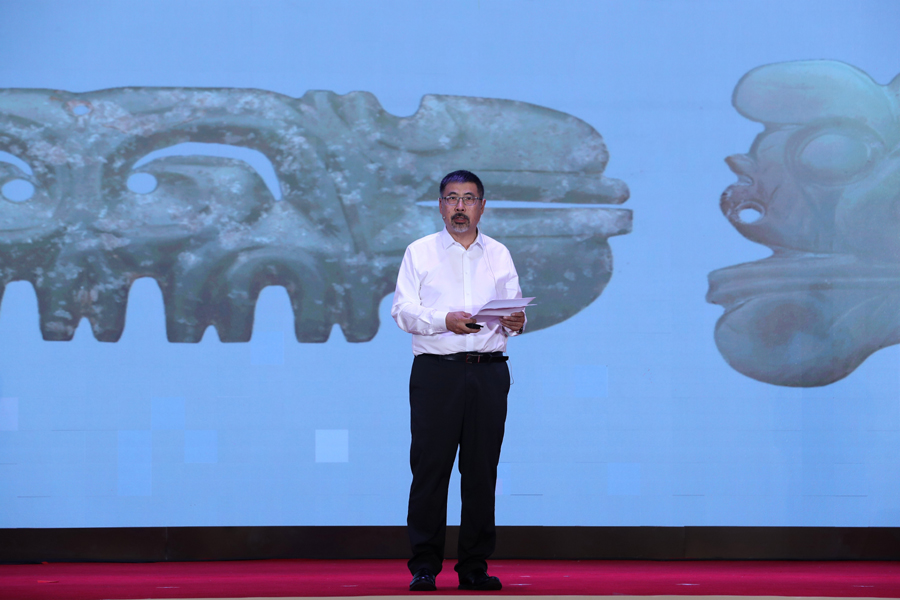


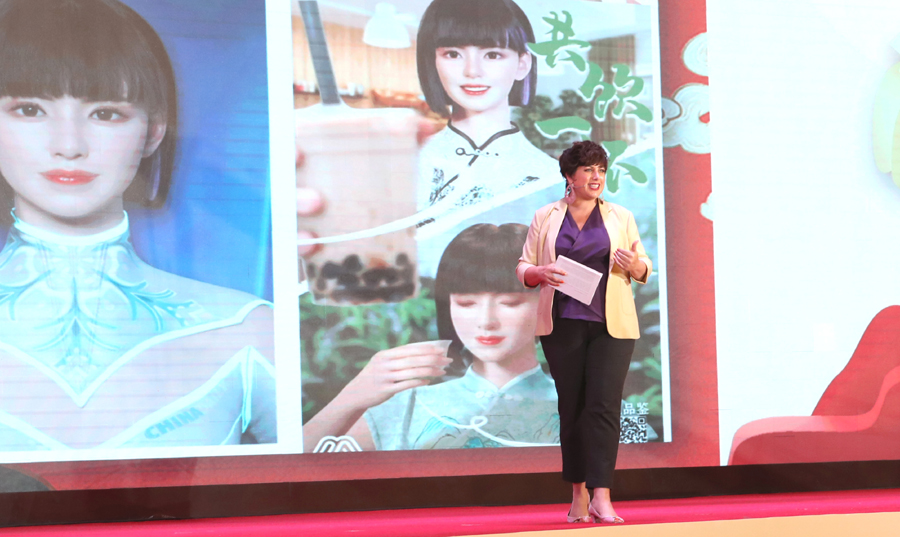
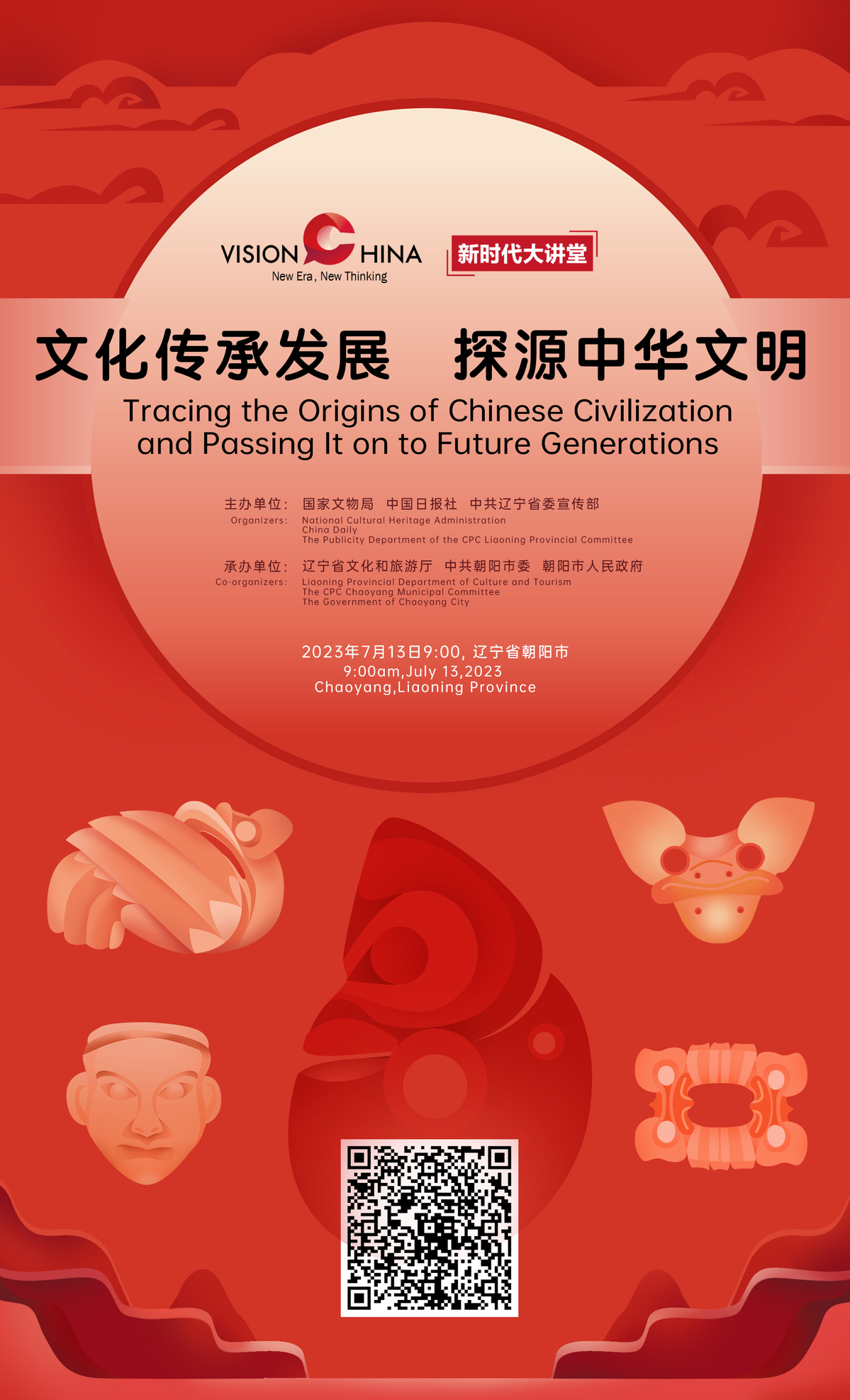
China Daily is organizing a Vision China event in Chaoyang, Northeast China's Liaoning province, to discuss topics related to cultural heritage. The theme is "Tracing the origins of Chinese civilization and passing it on to future generations." Tune in at 9 am (Beijing time), July 13 to watch the event LIVE.

The latest Vision China event themed "Tracing the origins of Chinese civilization and passing it on to future generations" will be held in Chaoyang, Northeast China's Liaoning province and broadcast live at 9 am on Thursday.
Guest speakers from home and abroad will discuss how to put their best foot forward in protecting cultural heritage.
China Daily is organizing a Vision China event in Chaoyang, Northeast China's Liaoning province, to discuss topics related to cultural heritage. The theme is "Tracing the Origins of Chinese Civilization and Passing It on to Future Generations".
Tune in at 9 am (Beijing time), July 13 to watch the event LIVE.
Speeches focus on technology's ability to drive economies, create dialogue

As digital technology becomes a pioneering force in driving the global technological revolution and industrial transformation, more effort is needed to allow intelligent technology to promote the national goal of the "building of a community with a shared future for mankind", according to Qu Yingpu, publisher and editor-in-chief of China Daily.
Speaking at the Vision China event on Thursday, Qu said that artificial intelligence, represented by ChatGPT, in particular, has become a buzzword, and many foreign experts believe that its advent is as important as the arrival of the PC or the internet.
An acronym for "Chat Generative Pre-trained Transformer", ChatGPT is an AI chatbot developed by OpenAI, a company based in the United States. It has wowed the world with its ability to take on a variety of tasks such as writing essays, debugging programs and making business plans, abilities that differentiate it from earlier, more narrowly focused AI projects that excelled in only one area.
Though different views on GPT exist, it is widely hoped that the latest technology will play a "positive and proactive" role in improving well-being, Qu said.
According to him, this potential can be fully leveraged to promote the "building of a community with a shared future for mankind", a concept first proposed by President Xi Jinping in March 2013. "In the future, we should give full rein to the role of intelligent technology in implementing the 'Three Initiatives' proposed by President Xi, " Qu added. This refers to the Global Development Initiative, the Global Security Initiative and the Global Civilization Initiative.
He made the comments as global economic recovery faces challenges, with problems including the disparity in development, dilemmas of governance, the digital divide and the equity deficit becoming more prominent. Concerns also exist that a new digital divide may emerge in the intelligent era.
"We should bridge the digital divide and create cohesiveness for the implementation of the Global Development Initiative," Qu said.
The publisher highlighted the fact that more effort is needed to nurture new drivers of economic growth in the post-epidemic era and create an open, fair, just and nondiscriminatory environment for scientific and technological development.
While praising the convenience and potential dividends that intelligent technology offers humanity, Qu also acknowledged that it is a double-edged sword and may create many challenges, as well as ethical issues.
"We should improve global governance of science and technology, and ensure intelligent technology evolves in the right direction to provide a strong pillar for global security," Qu said.

In February, the Chinese Foreign Ministry published The Global Security Initiative Concept Paper, which called for greater effort to strengthen international governance of AI and other emerging technologies to prevent potential security risks.
An analysis of the legislative records of 127 countries shows that the number of bills containing the term "artificial intelligence" that were passed into law grew to 37 last year from just one in 2016, according to the AI Index Report 2023 produced by Stanford University.
"AI has moved into its era of deployment; throughout 2022 and the beginning of 2023, new large-scale AI models have been released every month," Jack Clark, co-director of the Stanford Institute of Human-Centered Artificial Intelligence, wrote in the report.
"Given the increased presence of AI and its potential for massive disruption, we should all begin thinking more critically about how exactly we want AI to be developed and deployed."
As intelligent technology injects new vitality into global development, Qu also highlighted the importance of promoting exchanges to empower the implementation of the Global Civilization Initiative.
"We should further tap into the potential of intelligent technology and explore scenario-based, smart applications of cutting-edge technology to build new platforms for dialogue among civilizations, and for cross-cultural communication," Qu said.
By way of example, China Daily set up the MetaTime studio last year, which combines research from major projects such as the national project to trace the origins of Chinese civilization, and new technology such as the metaverse, to showcase the charm and significance of China's traditional culture and show the world a credible, attractive and respectable China.
The move resonates with the public's growing enthusiasm for AI. Citizens from China, Saudi Arabia and India are among those who feel the most positively about AI products and services, according to a survey of nearly 20,000 adults from 28 countries by Ipsos, a global market research group.
About 78 percent of Chinese respondents, the highest proportion among surveyed countries, agreed with the statement that products and services using AI have more benefits than drawbacks.
This was followed by Saudi Arabia (76 percent) and India (71 percent), Ipsos added.
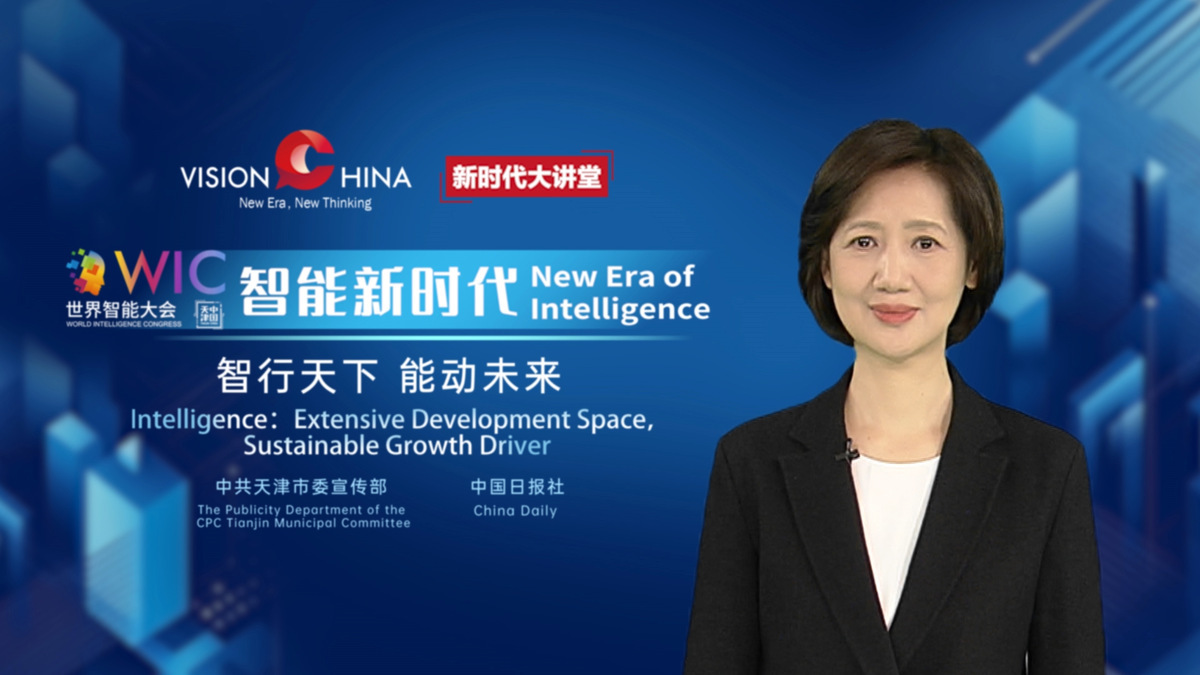
With emerging digital technologies like artificial intelligence expanding rapidly around the world, the northern port city of Tianjin plans to bolster efforts to promote development through technological innovation and opening-up, as well as education, technology and a strong workforce, a local senior official said.
Shen Lei, a member of the Standing Committee of the Communist Party of China Tianjin Municipal Committee and head of the committee's Publicity Department, said that in today's world, a new wave in the information technology revolution is in full swing, bringing profound change to industrial development.
"Data, algorithms and computing power have become crucial factors in determining the overall competitiveness of a region or country," she said at the latest Vision China event held on Thursday night.
"We need to harness the power of the new generation of artificial intelligence to drive technological innovation, upgrade industries and boost productivity."
Shen stressed the need to foster advantages in industrial development by vigorously developing the digital economy, accelerating the industrialization of digital technologies and the digital transformation of industries, and promoting the in-depth integration of the internet, big data and artificial intelligence with industries.
During the first quarter of this year, Tianjin's economy showed significant improvement and accelerated growth, with its GDP expanding by 5.5 percent year-on-year to 371.5 billion yuan ($53.3 billion) during the period.
The city's industrial output — a gauge of activity in the manufacturing, mining and utilities sectors — rose by 3.1 percent in the January-March period from a year earlier, after a 1.5 percent rise in the first two months.
Tianjin is shaping up to become a high-tech hub and has rolled out a series of policies to develop the AI sector. It has set up a special fund of 10 billion yuan for intelligent manufacturing, and a 100-billion-yuan industry fund for the new generation of artificial intelligence.
Shen said that as a megacity with over 10 million people and a rich cultural heritage, Tianjin occupies a strategic position in national development and boasts regional, industrial and resource advantages that can help it achieve growth.
She emphasized that Tianjin will deepen reform and opening-up, create a world-class business environment that is market-oriented, law-based, and internationalized, and set up a high-level platform for opening up.
Noting education, science and technology, and human resources as the foundational and strategic pillars for creating a modern socialist country in all respects, Shen said Tianjin will implement its action plan to develop the city through science, education and a highly-skilled workforce.
"This involves close integration between education and industry, between science and the economy, and between workforce building and development, and we shall create a sustainable competitive advantage for Tianjin by turning it into a city with high-quality education, a hub for scientific and technological innovation, and an open platform for attracting top talent," she said.
The Tiankai Higher Education Innovation Park also officially opened on Thursday. Shen explained the name "Tiankai" not only represents the collaboration between the two renowned century-old universities of Tianjin University and Nankai University, but also embodies the idea of revitalization.
The park aims to become a source of scientific and technological innovation, promoting the commercialization of scientific and technological breakthroughs, and the integrated development of innovative industrial chains.

Society can benefit from the new wave of technical revolution being unleashed by artificial intelligence, but must make sure that it remains under the control of humans, an expert said on Thursday.
Fu Xiaolan, a fellow at the National Academy of Social Sciences in the United Kingdom, was speaking at Vision China, which was organized by China Daily and the Tianjin Municipal Party Committee's publicity department.
The convergence of rapid technological breakthroughs has created new models of value production and a new industrial revolution, said Fu, who is also the founding director of Oxford University's Technology and Management Center for Development.
"Artificial intelligence is one of the core technologies at the heart of this revolution," she said. "The impact of artificial intelligence on society includes opportunities and challenges."
Fu highlighted the "wonderful opportunities for development" — greater efficiency, improvement of work conditions and welfare.
She cited the use of AI doctors during the COVID-19 pandemic as an example, and the opportunity the technology provides to developing countries that could enable them to skip some stages of development.
She also warned of the challenges created by AI.
"AI can replace workers, including skilled workers, whose jobs are repetitive and routine," she said.
"It can also significantly increase income inequality between rich and poor — those who own the technology and those who don't — and between countries."
AI may also deepen the existing digital divide and favor countries that have the needed skills, she said, adding that there are also privacy and security concerns and that the algorithms may contain embedded bias, which could influence outcomes.
"While globally, AI opens digital windows of opportunity for developing countries, there is also the risk that the opportunity for developing countries to catch up might narrow," Fu said, referring to the rapid rise of AI, as well as the infrastructure needed to develop it.
These challenges have also been highlighted by governments, tech giants, institutes and experts, especially since ChatGPT was launched earlier this year.
In a white paper on regulating AI released in late March, the British government proposed adopting a comprehensive regulatory approach. Italy and Canada have also underscored the data security risks posed by ChatGPT.
Stressing the importance of ensuring AI is responsible and ethical if it is to be useful, Fu emphasized the need to build privacy, robustness, transparency and fairness into the tech, noting that those who develop and employ AI for business and other services should be held accountable.
Trust must be created around the technology so that people have the confidence to use AI for economic and welfare improvement, Fu said.

Pierre Pakey, head of product innovation at Laiye Technology (Beijing) Co Ltd, shared his thoughts about how large language models, a new path in artificial intelligence, can mimic human minds in some ways during the latest Vision China.
Previously, the most common way to train AI was to give it plenty of examples, a process called supervised training.
With the new approach of descriptive training, AIs are trained in the same way humans would be, by describing the task that requires completion in natural language, Pakey said.
Taking the example of intelligent document processing, where the goal is to extract key information such as issue dates, supplier addresses and vendor names from an invoice, he said that the common way of training involves feeding the AI thousands of invoices.
But as invoices vary, one of the issues is physically pinpointing the positions of each piece of information on the documents in order to train the language model. This process is both slow and prone to errors, Pakey said.
"With descriptive training, people just describe what they want in plain language. So it's extremely simple and it completely changes the time necessary to actually launch a new AI and train on a new task," he said.
With descriptive training, users must ask themselves what the best question is, and what is the best way of asking the model to perform the desired task. This process is called prompt engineering.
"The first time we launched a large language model in production, we had very disappointing accuracy, meaning that our metrics were telling us this was a bad model. When we dove deeply to understand why our accuracy was poor, we noticed that the model was still doing better than the human laborers it was ranked against," he said.
The large language model needed to handle hundreds and even thousands of different examples, and in this situation, it did better than human workers at labeling.
As with any AI model, its accuracy did not exceed 95 percent, and Pakey said that if users needed further improvements, it was only a question of aligning expectations and of being very clear about what information they wanted to extract.
Large language models still have limitations. They need to be given time to produce a good answer, and when prompting different models for an answer, it's important to bear in mind the trade off between complexity and accuracy, Pakey said.
"But most importantly, they are able to learn new tasks almost instantly, and that makes this one of the most exciting things that we have seen in AI in a long time."

The future of AI and autonomous driving is exciting, and people should harness its combined power to create an inclusive, sustainable and prosperous future for all, according to Minh Thao Chan, an international student at Tsinghua University.
As a doctoral student in electronic engineering specializing in autonomous driving, he has witnessed the transformation of the AI landscape in China and is inspired by its passion, dedication and collaboration.
"Imagine a street in Beijing teeming with cars, pedestrians and cyclists, along which an autonomous vehicle moves gracefully, navigating the labyrinth of traffic, making split-second decisions with precision and accuracy," he said at Vision China on Thursday night.
This would be a sight to behold and symbolizes AI's potential to create a future where traffic jams are a memory and streets are safer, more efficient and environmentally friendly, he said, adding that it's a future that China is on the cusp of realizing.
When Thao Chan arrived in China from France in 2016, electric vehicles were just being introduced. By 2018, most taxis were electric, and in the last three years, autonomous vehicles have gone through trials at test centers and, more recently, on roads in Shanghai and Shenzhen, Guangdong province.
As more people embrace the potential of autonomous driving, these vehicles are becoming integral parts of the urban fabric, transforming how we live, work and play.
Thao Chan used the example of a visually impaired woman in Beijing to explain the power of AI and autonomous driving to change lives.
For most of her life, she relied on others for mobility, but the arrival of autonomous vehicles granted her newfound independence. She is now able to order a self-driving car and go wherever she desires.
However, he said that as people explore the potential of AI and autonomous driving, they must remain mindful of the challenges they present.
Data privacy, cybersecurity and ethical considerations must be addressed, and it is the collective responsibility of researchers, policymakers and citizens to ensure that AI technology remains safe.
"We have an unparalleled opportunity to shape a world that is more intelligent, more connected and more compassionate," he said.
"Together, we can forge a new era of transportation and mobility. Together, we can build a future where technology serves not just as a tool, but as a force for good, improving lives and fostering greater understanding, connection and collaboration across the globe."

A responsible approach is needed to maximize the benefits of artificial intelligence, which as a tool could be a powerful assistant to humans, according to a senior executive of United States tech giant Microsoft.
At Vision China on Thursday, Wei Qing, chief technology officer of Microsoft (China) Ltd, said that in the era of AI, positioning the relationship between humans and machines is of crucial importance.
"AI should be a copilot rather than an autopilot. In other words, the machine is an assistant to help people, and no matter how powerful, it is always in the side seat, not in the driver's seat," Wei said.
He referred to US engineer Vannevar Bush, who in 1945 published an essay titled "As We May Think", in which he was already envisioning the information era and the need to design a machine to help humans manage the information overload.
More importantly, Bush envisioned that the machine would be able to process information through selection by association, which Wei said is similar to the way generative AI works now.
Generative AI is the latest tech frontier and has taken the world by storm. It refers to computer algorithms trained to produce new text, images, code, video or audio, a key example of which is ChatGPT, an AI chatbot developed by US-based AI research company OpenAI.
Wei quoted a line from the 1927 movie Metropolis describing the difference between humans and machines: "The mediator between head and hands must be the heart."
"It is all about how to position humans and how to position machines. If we position this incorrectly, this might have a negative impact on society, but if this is positioned in the right way, as we mentioned just now, in a responsible way, we might see the coming of a new era of AI that will really help humans in a purposeful manner," Wei added.
His comments come in the wake of global discussion over the use of ChatGPT-style products and related AI technology, which have raised concerns of ethics, data security and infringement of personal privacy.
Meanwhile, the number of incidents involving the misuse of AI continues to rise. According to the AIAAIC database, an independent organization that tracks incidents related to the ethical misuse of AI, the number of incidents and controversies has increased 26-fold since 2012.
In an open letter in March, Tesla CEO Elon Musk and a group of AI experts and industry executives called for a six-month pause in developing language models more powerful than OpenAI's newly launched GPT-4, citing potential risks to society, with experts saying the development of responsible AI is vital to long-term, sustainable growth.
"At Microsoft, we have principles laid out as our North Star in doing all things related to AI, which starts from a foundation of accountability and covers all stages," Wei said.
But principles don't execute themselves, and they need to be interpreted. To solve this problem, Microsoft also provides tools and frameworks such as a measurement standard and tests for promoting responsible AI development, Wei added.
He also highlighted the fact that even though AI is now the buzzword, digital transformation remains the foundation for the progress of machine capabilities.
"No matter how powerful a machine is, it needs human data, either human-generated data or data generated by human-developed machines," Wei said.
"Then, through computer algorithms, AI can turn data and point-in-time data into information and knowledge.
"Its like the well-known information pyramid, DIKW — data, information, knowledge and wisdom. Humans should stay at the top, at the wisdom level, and machines should handle the rest of the work."

Artificial intelligence can be harnessed to boost the efficiency of healthcare services and hospital management, devise tailored treatment plans and help address the shortage of doctors, a senior hospital manager said on Thursday.
Yan Hua, an ophthalmologist who is also Party chief of Tianjin Medical University, said that a wide range of AI tools such as speech recognition, computer vision, data collection and analysis can be deployed to empower the medical sector.
"AI can improve the efficiency of diagnosis and treatment and increase safety and precision in patient care," he said during a Vision China event organized by China Daily in Tianjin. "It can also prescribe personalized medicine based on the particular conditions and genomic information of patients to improve treatment outcomes."
Yan said that AI can also play a positive role in enhancing hospital management and alleviating the lack of doctors. It can also help patch the healthcare insurance net in less-developed regions.
"For instance, grassroots eye doctors might not be capable of detecting diabetic retinopathy accurately and might have no idea how to deliver treatment.
But if communities are equipped with an AI device to help them screen for the condition, those showing signs of the disease can be diagnosed and transferred to better hospitals where they can be treated," he said.
Yan said that the accuracy rate of AI-powered diagnosis is nearly on par with that of experienced doctors, but AI greatly shortens the time it takes to generate a correct diagnosis.
"Also, for patients with very complicated eye diseases, AI can be used to help design and execute a surgery," he added.
Yan said that for patients with severe eye trauma and who have lost the perception of light, the question of whether a vitrectomy — surgery to remove the eye's vitreous humor, the tissue behind the lens of the eye, and replace it with another solution — would yield the desired results is difficult for even top doctors to determine.
"We have therefore developed and upgraded an AI model that is fed the condition of patients before surgery, such as whether the retina is detached or the vision is impaired," he said.
"As a result of continuous training and testing, the system can generate an accurate prediction of the post-surgery level of vision."
Yan Hua said that AI's spread into the healthcare sector has begun but remains at an early stage.
"Although AI has many advantages, doctors cannot be replaced entirely because AI needs to learn and train," he said.
"As the medical field advances, doctors are still needed to continue feeding fresh data to the AI for it to process."
A potential caveat, he said, is how to determine legal responsibilities when an incorrect diagnosis is given, or a misuse of technologies occurs.
"The protection of patient-doctor privacy and data security are bound to be essential tasks," he said.
Yan added that there is no standard pricing mechanism for medical services involving AI so far, which could prevent hospitals from purchasing and deploying AI equipment.
As the next generation of artificial intelligence technology is expected to play a positive role in improving human well-being, greater efforts should be made to give full play to the role of emerging intelligent technology to empower high-quality economic development and ensure the safe and responsible use of AI, according to speakers at the latest Vision China event on Thursday.

Qu Yingpu, publisher and editor-in-chief of China Daily, called for efforts to nurture new drivers of economic growth in the post-pandemic era, create an open, fair, just and nondiscriminatory environment for scientific and technological development, and work hard to eliminate "gaps" and "barriers".
The purpose of such moves is to promote balanced, coordinated and inclusive global development while enabling people of all countries to better share the fruits of development, Qu said.
"We should work together to improve global governance on science and technology, build a balanced, effective and sustainable security architecture, and let intelligent technology evolve in the right direction to provide a strong pillar for global security," Qu said at the event.
He also stressed the need to further tap into the potential of intelligent technology and explore scenario-based, smart applications of cutting-edge technology, in order to build new platforms for dialogue among civilizations and cross-cultural communication, and make greater contributions to cultural blending and people-to-people exchanges across the globe.
Jointly organized by China Daily and the Publicity Department of the Communist Party of China Tianjin Municipal Committee, the event, themed "Intelligence: Extensive Development Space, Sustainable Growth Driver", was broadcast to a global audience on Thursday night. The event is part of the ongoing 7th World Intelligence Congress, which started on Thursday and runs through Sunday in Tianjin.
The congress showcases the latest achievements and trends of AI development and brings together officials, experts, scholars and entrepreneurs to discuss key topics such as intelligent connected vehicles, generative AI, intelligent manufacturing, brain-machine interaction and other cutting-edge technologies.
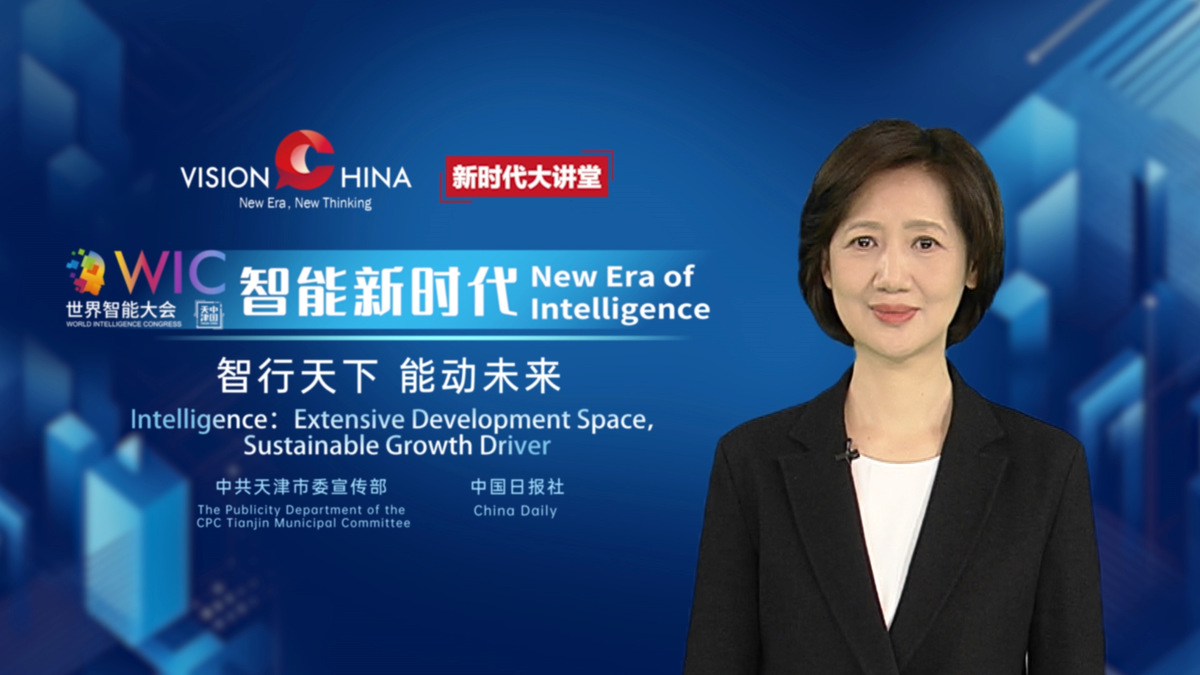
"We need to harness the power of the new generation of artificial intelligence to drive technological innovation, upgrade industries and boost productivity," said Shen Lei, a member of the Standing Committee of the CPC Tianjin Municipal Committee and head of the committee's Publicity Department.
Shen highlighted the significance of fostering new advantages in industrial development by vigorously developing the digital economy, accelerating industrial digitalization and digital industrialization, and promoting the in-depth integration of the internet, big data and AI with industries.
Tianjin, a major port city in northern China, has been actively embracing AI, intelligent manufacturing and other related smart technologies to stay abreast of key developments. It has set up a special 10 billion yuan ($1.42 billion) fund for intelligent manufacturing and a 100-billion-yuan industry fund for the new generation of AI.
Shen said Tianjin will deepen reform and opening-up, create a world-class business environment that is market-oriented, law-based and internationalized, and build a high-level platform for opening-up.

Wei Qing, Microsoft (China) Ltd's chief technology officer, said no matter how powerful AI is, it is a machine's capability. How humans react to, manage and guide it will determine whether it serves human purposes. "So, there must be a responsible AI approach and principle," Wei added.
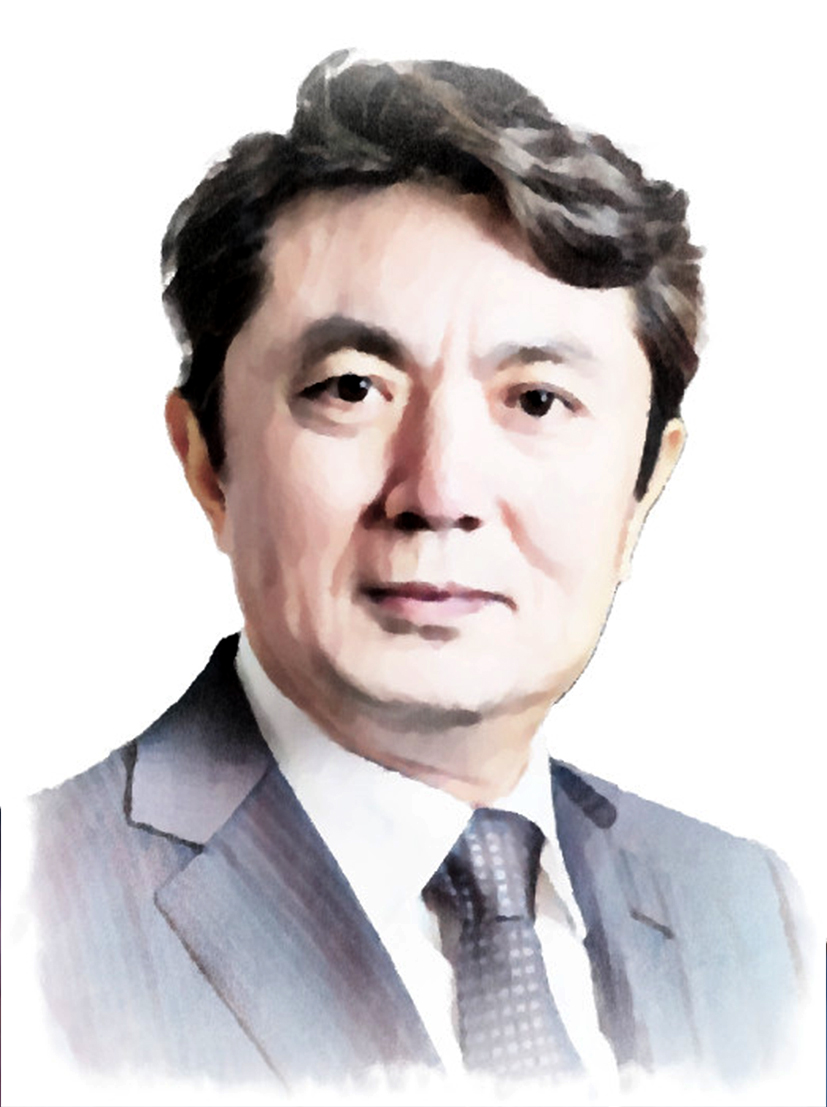
AI is gradually being implemented in the medical field, covering screening, diagnosis, treatment and predictions, said Yan Hua, Party secretary of Tianjin Medical University. It helps to provide better hospital management, patient services, chronic disease management and more efficient medical process.
There are still problems in AI's use in the medical field, such as ethical issues, data security and the calculation of the cost of AI, Yan said, adding that its application in the field is still in the early stages of development.

Pierre Pakey, head of product innovation of Laiye Technology (Beijing) Co, said one of the most exciting developments in AI is that large language models can sometimes provide much finer details than human efforts.
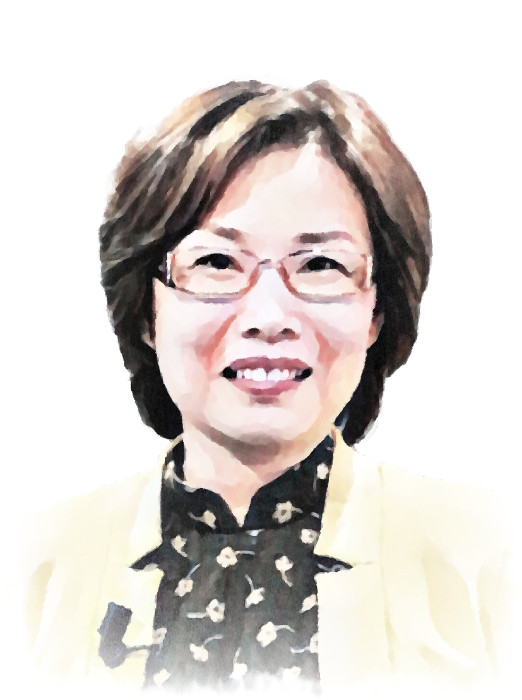
Fu Xiaolan, a fellow of the British Academy of Social Sciences and professor and director of the Technology and Management Center for Development at the University of Oxford, said AI can bring wonderful opportunities for development through providing greater efficiency and improvement in work conditions and welfare. It can also enable innovation in production and social services, and bring significant digital windows of opportunity for some developing countries.
Although AI brings new development opportunities, there are still challenges to face, she added.
"We need to ensure the privacy, security and safety and robustness in the use of AI and also the transparency and fairness in the application of AI and accountability of the people who develop and employ AI for business and other services," Fu said.

AI has immense potential for revolutionizing transportation in areas such as managing traffic jams and making streets safer, more efficient and environmentally friendly, said Minh Thao Chan, a PhD student majoring in electronic engineering at Tsinghua University.
Contact the writers at
fanfeifei@chinadaily.com.cn
